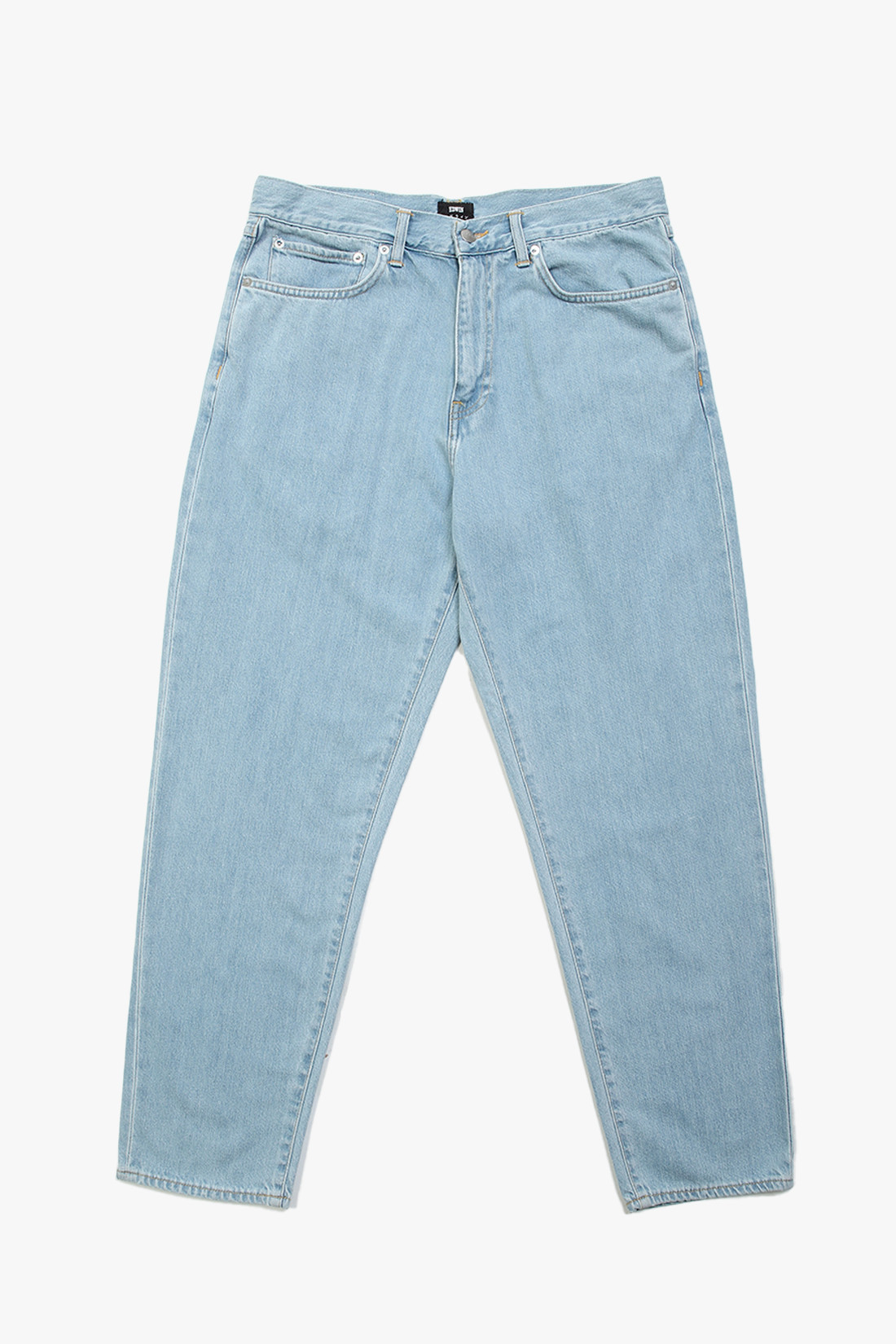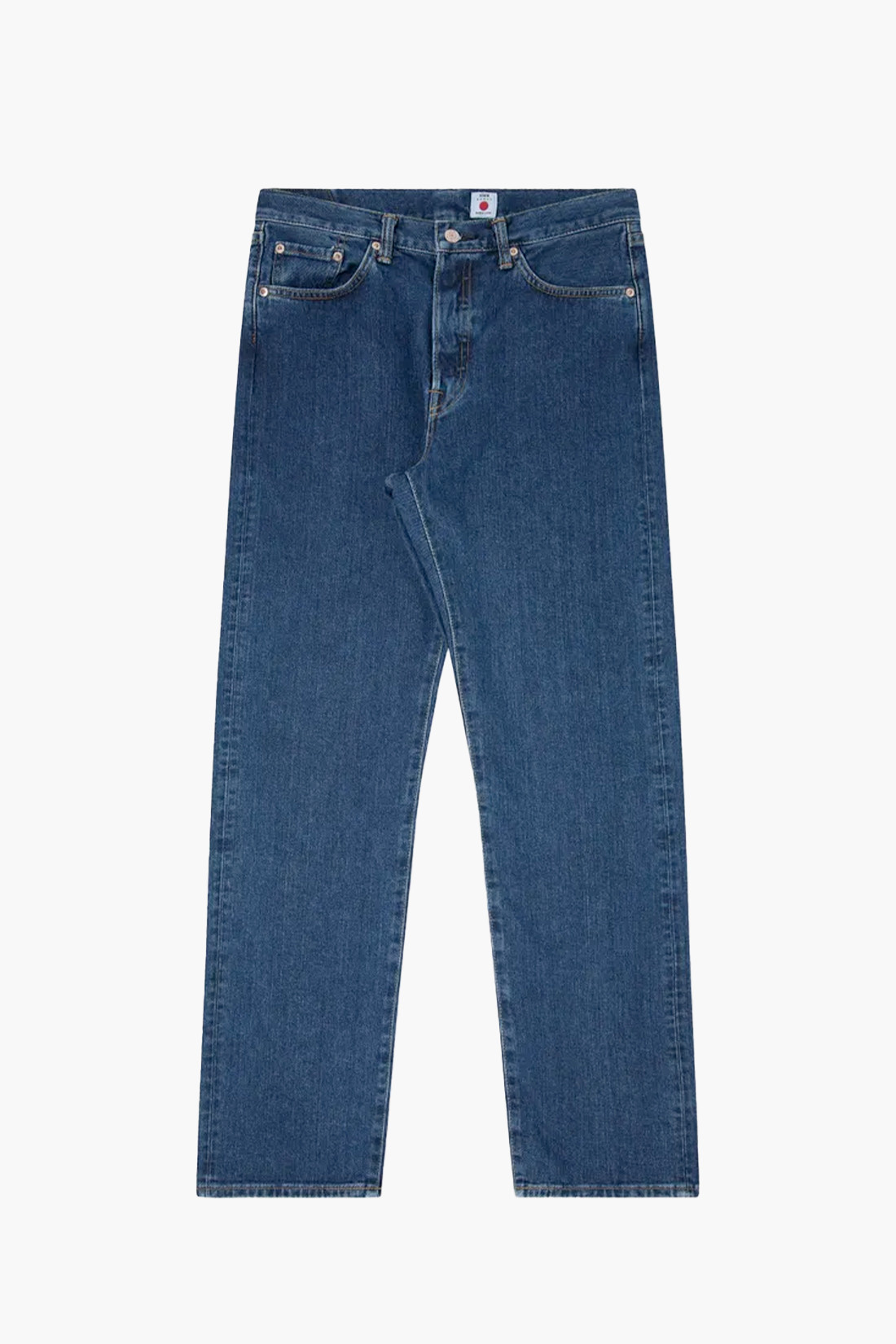What is Japanese Selvedge Denim?
Japanese denim is an undeniable reference in the world of denim. Known for its superior quality, durability, and unique beauty, it is particularly appreciated in the realm of Japanese jeans.
Table of Contents
- What is Japanese Selvedge Denim?
- Difference between Selvedge Denim and Raw Denim?
- Production of Japanese Selvedge Denim
- Why is Japanese Selvedge Denim Appreciated?
- How to Recognize Fake Selvedge?
What is Japanese Selvedge Denim?
Japanese selvedge denim refers to a highly reputed category of denim fabric. The term "selvedge" comes from "self-edge," and it is a fabric produced on a shuttle loom, creating a finished, clean edge on both sides of the fabric, preventing fraying. Selvedge denim is often associated with high-quality products due to the precision and time required for weaving.
Japanese selvedge denim is particularly known for its attention to detail, heavy weight, deep color, and ability to age beautifully over time.
Difference between Selvedge Denim and Raw Denim?
Understanding the difference between selvedge denim and raw denim is essential for any denim enthusiast. These two terms, commonly used in the denim industry, refer to different characteristics of jeans and can sometimes cause confusion.
Selvedge denim: Produced on a shuttle loom, creating a clean and finished edge on both sides of the fabric, preventing fraying. Selvedge jeans are often associated with superior quality and feature a distinctive colored edge (often red) on their inner seam.
Raw denim: Refers to the state of the fabric after dyeing. Also known as raw denim, it is a fabric that has not been washed, distressed, or treated after being dyed. It is in its natural state, indigo-dyed twill whose color has not been further treated to be fixed. This is why raw jeans lose their color and fade more easily than others.
Production of Japanese Selvedge Denim
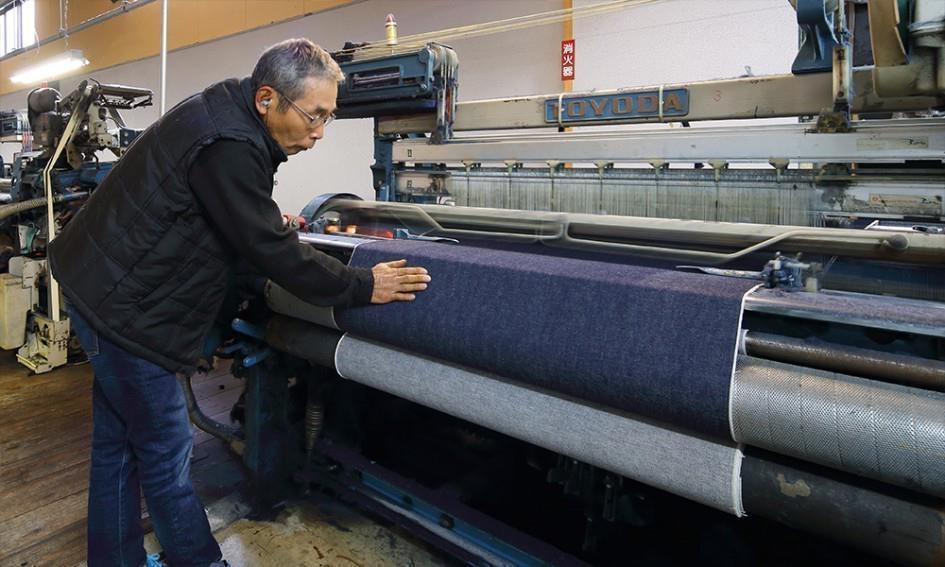
© Crédits Royal Cheese Paris
The production of selvedge denim is a complex and time-consuming process that demands great craftsmanship. The shuttle looms used are often older models, which weave denim more slowly, creating narrower fabric than modern methods.
The fabric is typically dyed with natural indigo, giving it its rich blue color. Over time and wear, the fabric develops a patina and fades, creating a unique garment for each individual.
The Beginnings: American and Japanese Manufacturers
The story begins with Cone Mills, the official supplier for Levi's. Unfortunately, the mill closed its doors in 2017, but some Cone Mills denims are still available second-hand. American brands like Blue Owl, Gustin, Williamsburg, and Brave Star continue to produce high-quality selvedge denim in the USA, a testament to their authenticity and professionalism.
Japan, the Land of the Rising Sun, is the birthplace of raw indigo selvedge denim. Numerous iconic Japanese spinning mills:
-
- Kurabo, founded over a century ago, known for its natural indigo dyeing.
- Kaihara, specializing in Rope Dyeing and ring-spun selvedge denim.
- Japan Blue Group, representing Japan Blue and Momotaro, renowned brands.
- Kuroki and Nihon Menpu, partners of brands like 3sixteen, Taylor Stitch, RRL, and Edwin.
- Japanese labels like orSlow and Warehouse & Co produce their own selvedge fabrics, showcasing their creativity.
Japanese selvedge denim remains a shared passion between the USA and Japan, each having its own history and iconic brands. Between tradition and innovation, this indigo fabric continues to captivate denim enthusiasts worldwide.
A Long Process and Quality Raw Materials
Japanese denim manufacturing was once a closely guarded secret. It became apparent that these skills were rare outside of Japanese factories, carefully kept as hidden treasures. Beyond weaving, the meticulous choice of cotton, spinning, dyeing, and even the selection of threads played a crucial role in the final appearance of the fabric. This discovery highlighted the complexity of denim manufacturing and emphasized the importance of skilled craftsmanship in creating this iconic fabric.
Why is Japanese Selvedge Denim Appreciated?
Japanese selvedge denim is appreciated for its durability, authenticity, and the unique beauty it acquires over time. It is often more expensive than standard denim, but many consider the investment worthwhile.
Japan's passion for excellence and craftsmanship is perfectly embodied in their selvedge denim. Every step of production is carried out with great care and respect for tradition, which is reflected in the final product's standard.
In conclusion, selvedge denim is more than just a fiber. It is a reflection of a centuries-old tradition of Japanese craftsmanship, a symbol of quality, and proof of the importance placed on details. By wearing a pair of selvedge denim jeans, you are not just wearing clothing; you are wearing a story and a legacy.
The Strength of Japanese Selvedge Denim
One of the main characteristics of selvedge denim lies in its robustness. This strength comes from the weaving method used in its production. Shuttle looms weave the yarn very tightly, making the fabric denser and, therefore, more resistant to tearing and wear. Additionally, the natural indigo color does not fade as easily as synthetic dyes, allowing the denim to retain its intense color for longer. The yarn used in the weaving is also of high quality, adding to the durability of the final product.
Over time, selvedge denim will mold to the wearer's body shape, developing a unique pattern of wear and fading, commonly known as patina. It is this ability to age gracefully that makes selvedge denim highly sought after.
Examples of Japanese Selvedge Denim Brands
Several denim brands have made a name for themselves by offering Japanese selvedge denim jeans. Among them are:
- Momotaro Jeans: Based in Kojima, a region known as the birthplace of Japanese denim, this brand is famous for its highly precise selvedge denim and roller dyeing techniques.
- The Flat Head: This brand is known for its dedication to creating vintage-inspired jeans from the American mid-20th-century era. Their denim, woven on vintage shuttle looms, has a distinctive texture and an incredible ability to fade over time.
- Pure Blue Japan: Specializing in raw (unwashed) denim and selvedge fabric, Pure Blue Japan is renowned for its intense blue denim and the unique patina it develops.
- Iron Heart: Founded by a former biker, this brand focuses on producing extremely durable and robust jeans, with selvedge denim thicker than the average.
Each of these brands highlights the unique qualities of Japanese selvedge denim, showcasing its durability, beauty, and adaptability that set this fabric apart.
Graduate and Japanese Jeans
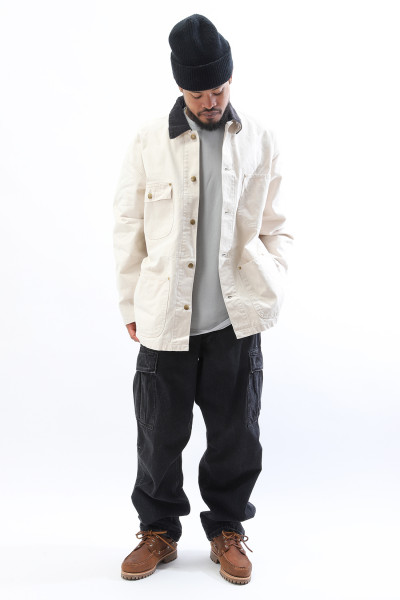
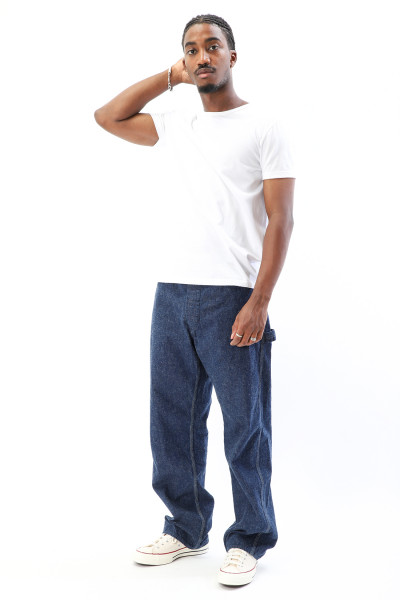

Edwin
Edwin, a Japanese brand, played a crucial role in adopting American jeans in Japan and innovated with "Old Wash" and "new vintage" denim washing. With an international collection of denims made in Japan, Edwin offers a variety of cuts and uses superior fabrics from recognized manufacturers. The brand made its debut by reconditioning American jeans for resale in Japan. It emphasizes sustainability, using recycled fibers, recyclable buttons and rivets, and environmentally friendly washing techniques.
Orslow
Orslow is a Japanese denim brand that blends local expertise with American military influences. With a focus on quality and thoughtfulness in each piece, Orslow creates garments that are both timeless and modern. The limited production, done in their workshop in Hyogo, ensures slow but qualitative output. Their iconic models, the Orslow 105 and Orslow 107, draw inspiration from original Levi's and are woven on shuttle looms from the 1930s, promising impressive historical fidelity.
LEVI'S ® VINTAGE CLOTHING
Levi's® Vintage Clothing is a sub-brand of Levi's that focuses on reproducing classic styles from Levi's long history. This range highlights Levi's iconic pieces and reimagines archival designs for a contemporary audience. Maintaining the quality and craftsmanship of the originals, Levi's® Vintage Clothing offers a nostalgic perspective on denim while upholding the modern excellence of the Levi's brand.
How to Recognize Fake Selvedge?
Selvedge jeans, with their tight weave and clean finish, have gained a reputation for excellence in the denim world. However, with this popularity came a wave of counterfeits seeking to imitate the look and feel of these high-end jeans. So, how can you tell if the selvedge jeans you are considering to buy are authentic or not? Here are some key elements to check:
1. Selvedge Edge: The word 'selvedge' comes from 'self-edge,' which is the natural edge created by the loom during denim production. Authentic selvedge jeans have a clean finish on the edge, often with a contrasting colored thread (usually red or white). If this edge looks fake, poorly made, or simply sewn on top, it is likely a fake.
2. Weave: Selvedge denim is woven on shuttle looms that create a dense and tight fabric. Authentic selvedge jeans have a more robust look and feel than regular jeans. If the fabric appears thin, lightweight, or loose, it is likely not real selvedge.
3. Details: Authentic selvedge jeans are often made with meticulous attention to detail. This may include strong stitching, exceptional rivets, and well-crafted buttons. If the details look sloppy or of poor quality, the jeans are probably not genuine selvedge.
4. Origin: Many authentic selvedge jeans are made in Japan or the USA, where the tradition of selvedge denim is well-established. If the jeans are made in a country without such a tradition or if information about the origin is hard to find, it could be a sign that they are fake.
5. Price: Finally, selvedge denim is generally more expensive than standard denim due to the longer and more complex manufacturing process. If you find selvedge jeans that seem incredibly cheap, they may be too good to be true. Of course, these are just guidelines, and there are exceptions to every rule. However, keeping these points in mind can increase your chances of spotting fake selvedge and making an informed purchase.

